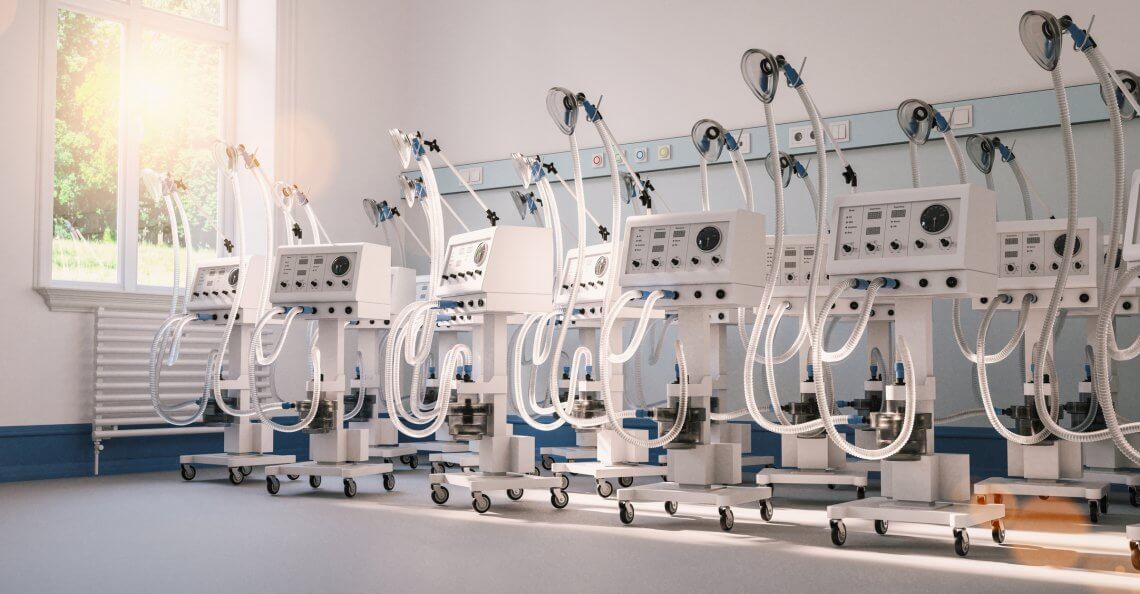
When it comes to recruiting new respiratory therapists, potential students fall into two camps.
They either have no idea what a respiratory therapist is, or they have had direct experience with the profession through their own illness or that of a family member, said Lisa Johnson, program director of the respiratory care program at Stony Brook University in Long Island, New York.
That was before COVID-19.
“When students hear about professions in the news, it piques their interest,” Johnson said. “Right now, there’s a high demand.”
Even prior to the start of the novel coronavirus pandemic, the U.S. Bureau of Labor Statistics expected respiratory therapy to the be the country’s fastest-growing profession in the coming decade.
The number of respiratory therapists in the U.S. is expected to increase 19 percent by 2029, according to the bureau’s outlook handbook.
The increased need for RTs is driven on two fronts by baby boomers, according to Tom Kallstrom, executive director of the American Association for Respiratory Care and executive vice president of the American Respiratory Care Foundation (ARCF).
Baby boomers make up a large portion of current respiratory therapists and are set to retire in the coming years. In addition, as the large population of baby boomers ages and potentially develops conditions such as chronic obstructive pulmonary disease (COPD), more respiratory therapists will be needed in healthcare.
“We want to make sure we have enough trained people to take care of these patients,” Kallstrom said.
The ARCF has a number of efforts underway to help recruit future respiratory therapists. That includes be-an-rt.org, a website dedicated to educating future respiratory therapists about programs, opportunities, and job benefits.
Johnson said there are no current plans to expand the department at Stony Brook to accommodate more than an average of 45 students, as the student demand often ebbs and flows over time. While there may be an increased interest now due to the pandemic, interest may fall again later, she said. “We have really high hills and low valleys,” she said.
Nikki Kyle, the program director for respiratory therapy at Ivy Tech Community College in Fort Wayne, Indiana, agreed. Respiratory therapy program class sizes average about 28 students per year and will remain that size despite increased demand.
When speaking with future respiratory therapists, Kyle likes to emphasize the versatility of respiratory care – especially when it comes to the patient populations respiratory therapists work with. Respiratory therapists may help with a baby delivery in the morning and find themselves in an ICU in the afternoon.
By contrast, Salisbury University in Maryland has recently expanded its respiratory care program in response to the projected need for respiratory professionals in the coming years.
Typically, students are attracted to the flexibility of the profession, said Lisa Joyner, the respiratory care department chair at Salisbury. RTs can work in multiple clinical settings, including doctor’s offices and clinics. They can also go on to pursue research or physician’s assistant school.
But the recent pandemic has helped create even more interest, Joyner said.
Previously the program had an average of 40 students each year. The fall 2020 class was at 53 students.
“Respiratory therapy has made headlines and there’s a need for them,” Joyner said. There were approximately 135,800 respiratory therapists in the U.S. in 2019, according to the labor statistics bureau. A 19 percent increase in the workforce would add an additional 26,300 respiratory therapists.
Respiratory therapists require an associate’s degree, though there are bachelor’s degree programs, and median pay is about $61,000, according to 2019 statistics.


